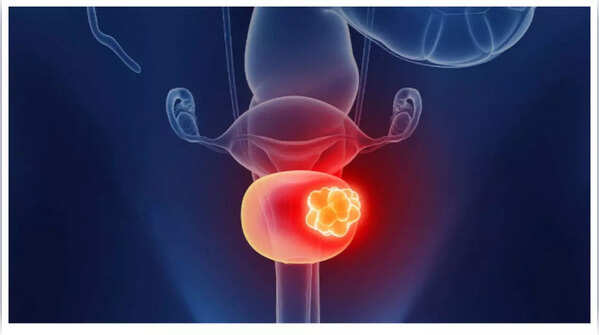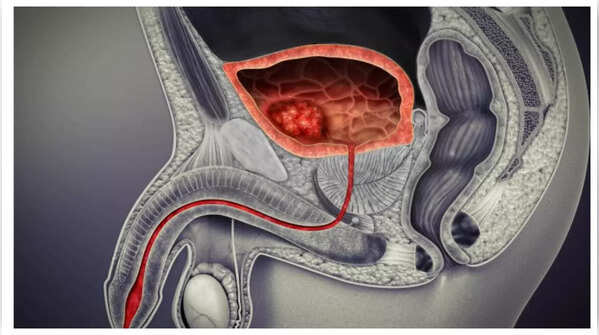Bladder cancer, characterized by the formation of cancerous cells within the bladder tissues, disproportionately affects men over the age of 55. While the presence of blood in urine (hematuria) is widely recognized as an initial and crucial indicator, subtle symptoms often escape early detection. Recognizing these less obvious signs is critical for timely diagnosis and treatment.

Here are five subtle symptoms of bladder cancer that individuals should be vigilant about:
One of the earliest manifestations of bladder cancer can be a noticeable change in urination patterns. This includes experiencing a more frequent need to urinate, even when fluid intake remains consistent. Additionally, individuals may encounter a sudden, compelling urge to urinate, even with a relatively empty bladder. These symptoms can be easily mistaken for a urinary tract infection (UTI) or an overactive bladder, delaying the recognition of a potential underlying malignancy.

If these changes persist for several weeks or are accompanied by other concerning symptoms, seeking medical evaluation is essential. These symptoms may indicate irritation or abnormal growths within the bladder that require professional attention.
Experiencing pain or a burning sensation during urination is another symptom that can be easily attributed to common infections like UTIs. However, bladder cancer can cause inflammation or irritation of the bladder lining, resulting in discomfort during urination.

Unlike typical UTIs that often respond effectively to antibiotics, pain associated with bladder cancer may persist or recur repeatedly. If painful urination is accompanied by other symptoms, such as blood in the urine or increased urinary frequency, consulting a healthcare professional is imperative.
Bladder cancer can induce a persistent sensation of needing to urinate, even when the bladder is nearly empty. This sensation can be frustrating, as it provides no relief after voiding. It is often confused with an UTI.

This phenomenon arises because tumors or abnormal growths within the bladder can irritate nerves or compromise bladder capacity, transmitting false signals to the brain. If this sensation persists or worsens, prompt medical evaluation is warranted, as it may signify bladder abnormalities, including cancer.
While early-stage bladder cancer may not manifest with pain, as the disease progresses, discomfort or aching in the lower back or pelvic region may develop. This pain is often characterized as dull and persistent, potentially leading to misdiagnosis as muscle strain or other common ailments.

Pain in these areas may indicate that the cancer has infiltrated deeper layers of the bladder wall or adjacent tissues. It is crucial not to disregard unexplained lower back or pelvic pain, particularly when accompanied by urinary symptoms.
While visible blood in the urine is a well-established symptom of bladder cancer, the presence of microscopic amounts of blood may go unnoticed. This condition, known as microscopic hematuria, may only be detected through laboratory urine tests. The urine might appear as an "off color" rather than the typical pink or red.

Because there is no obvious sign like red or pink urine, microscopic blood in the urine often goes unnoticed unless a urine test is done for other reasons. Individuals with risk factors such as smoking, exposure to harmful chemicals, or a family history of bladder cancer should consider regular urine tests to facilitate early detection of these concealed signs.
Sources: Mayo Clinic, Cleveland Clinic, The National Cancer Institute
Newer articles
Older articles
 Gavaskar Calls for Kuldeep Yadav's Inclusion in Second Test Amid Bumrah Fitness Concerns, Cites Edgbaston Spin Advantage
Gavaskar Calls for Kuldeep Yadav's Inclusion in Second Test Amid Bumrah Fitness Concerns, Cites Edgbaston Spin Advantage
 Indian Astronaut Shukla Arrives at ISS, Ushering in New Era for Space Program
OR
India Celebrates as Shukla Reaches ISS, Advancing Ambitious Space Goals
Indian Astronaut Shukla Arrives at ISS, Ushering in New Era for Space Program
OR
India Celebrates as Shukla Reaches ISS, Advancing Ambitious Space Goals
 Rishabh Pant Revolutionizing Cricket, Says Greg Chappell
Rishabh Pant Revolutionizing Cricket, Says Greg Chappell
 Toxic Workplace Warning Signs: Spot the Red Flags Early
Toxic Workplace Warning Signs: Spot the Red Flags Early
 Indian Cricket Star Mukesh Kumar and Wife Divya Singh Announce the Arrival of Baby Boy
Indian Cricket Star Mukesh Kumar and Wife Divya Singh Announce the Arrival of Baby Boy
 Global Immunization Crisis: Millions of Children at Risk as Vaccine Coverage Lags, Study Reveals
Global Immunization Crisis: Millions of Children at Risk as Vaccine Coverage Lags, Study Reveals
 Moto G54 Price Slashed in India: Check Out the Discounted Rates and Specs
Moto G54 Price Slashed in India: Check Out the Discounted Rates and Specs
 IRCTC Launches AI Chatbot 'AskDisha 2.0' to Revolutionize Train Ticket Booking and Customer Service
IRCTC Launches AI Chatbot 'AskDisha 2.0' to Revolutionize Train Ticket Booking and Customer Service
 Cummins Lauds Australia's Dominant Start to WTC Campaign After West Indies Series Win
Cummins Lauds Australia's Dominant Start to WTC Campaign After West Indies Series Win
 Smith Targets Test Return After Innovative Baseball Cage Rehab in New York
Smith Targets Test Return After Innovative Baseball Cage Rehab in New York